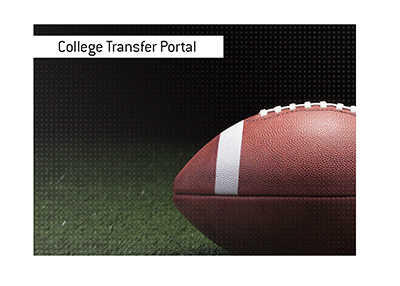New Rules Allow Players To Transfer Once Without Sitting Out a Year
Published on December 5th, 2022 2:05 pm ESTWritten By: Dave Manuel
 Back in the day, players would be punished for wanting to transfer to another school.
Back in the day, players would be punished for wanting to transfer to another school. Players that transferred schools would be forced to sit out an entire year, and they would only receive an extra year of eligibility if their hardship waiver was granted.
This made it very difficult for players to transfer, and many decided to stay put even though they desperately wanted to change schools.
In October of 2018, the National Collegiate Athletic Association (NCAA) created the NCAA transfer portal, which allows athletes in a number of different sports, including football, men's and women's basketball and baseball, to transfer schools without having to sit out a year.
In August of 2022, the Division I board created the concept of the "transfer window", which is similar to how professional soccer leagues work.
For this article, we are going to focus on how the transfer portal works for college football.
-
There is a 45 day "winter window" opening in college football that opens the day after championship selections are made. This window opens right at the end of the season for most teams.
Teams that are playing in championship games will have a special 15 day window that opens the day after their final title games.
So, if Michigan is playing Georgia in the national championship game, the window for both teams would open the day after their game, and would be open for 15 days.
There is also a spring window that is open from May 1st to May 15th.
All college football players are entitled to transfer ONCE. Players can not transfer from school to school - this can only do so one time.
-
If a player wishes to enter the transfer portal, they must first notify their school.
The school will then enter the player's name into a database (no later than two business days after the request to transfer is made), and other schools can start to contact this player immediately, offering scholarships, school visits, etc.
All schools are able to see who has entered the transfer portal, and the player will have until the window closes to decide what they would like to do.
A player can also decide NOT to transfer and withdraw themselves from the portal.
Players who transfer are eligible to play the following season. In the past, they'd have to sit out a year, and possibly not gain another year of eligiblity.
-
Let's look at an example of a player entering the transfer portal.
Shedeur Sanders is the son of Deion Sanders, and was the starting quarterback for Jackson State while "Prime" coached there.
When Deion Sanders took the head coaching job at Colorado, Sanders immediately entered the transfer portal. Colorado will be able to offer him a full scholarship, and Shedeur will be able to transfer to Colorado and play there immediately.
Other Jackson State players will be able to transfer to Colorado as well, and any displaced current Colorado players will be able to transfer to another school.
Remember, though - players can only transfer once during their collegiate careers.
-
Compare this to in the past, when Shedeur Sanders would have to sit out a year and possibly not receive an extra year of eligibility. That would make a transfer much less palatable, as sitting out an entire season can be disastrous for a developing athlete.
This system is much more fair and generates a great deal of excitement.
Other reasons why a player might enter the transfer portal include:
1) Lost starting job to another player (this happens quite often with quarterbacks)
2) Wants to be closer to home
3) Coach that recruited the player leaves for another school
-
In addition to being able to receive NIL money, the current transfer system has made college sports much more appealing for many players across the country.




